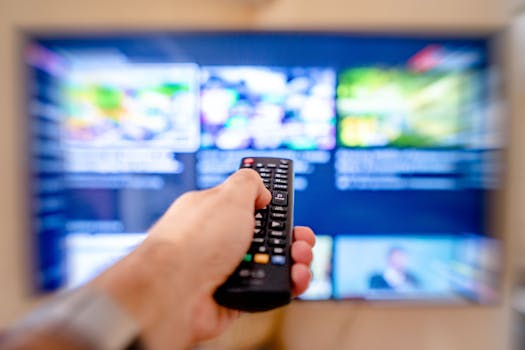Discover how your TV's energy-saving mode can negatively impact picture quality. We'll explore the trade-offs between energy efficiency and visual fidelity, and provide tips for optimizing your TV settings.

Introduction
In today's world, energy conservation is a top priority. Many modern televisions come equipped with energy-saving modes designed to reduce power consumption. While these modes seem like a win-win, they often come at a cost: degraded picture quality. This article will delve into the mechanics of these modes, explain how they affect your viewing experience, and offer practical advice on how to strike the right balance between energy efficiency and optimal image quality.
How Energy Saving Modes Work
Energy-saving modes primarily work by reducing the TV's backlight brightness. LCD and LED TVs rely on a backlight to illuminate the screen, and this backlight consumes a significant portion of the TV's power. By dimming or dynamically adjusting the backlight, energy consumption is decreased. Some advanced modes also adjust contrast, color saturation, and other image parameters to further reduce power usage.
# Common Techniques Used
- Backlight Dimming: This is the most common approach. The backlight is simply dimmed to a lower level.
- Dynamic Backlight Control: The backlight brightness is dynamically adjusted based on the content being displayed. Darker scenes result in a dimmer backlight, while brighter scenes allow for a brighter backlight.
- Automatic Brightness Control (ABC): The TV uses a sensor to detect ambient light levels and adjusts the screen brightness accordingly. This can reduce power consumption in dimly lit rooms.
- Contrast and Color Adjustments: Some modes may reduce contrast or color saturation to further minimize energy use.
The Impact on Picture Quality
While energy-saving modes can be effective at reducing power consumption, they often compromise picture quality in several ways:
# Reduced Brightness and Contrast
Dimming the backlight directly reduces the overall brightness of the screen. This can make the picture appear dull and washed out, especially in brightly lit rooms. The contrast ratio, which is the difference between the brightest and darkest parts of the image, is also reduced, leading to a less dynamic and immersive viewing experience.
Example: Imagine watching a dark scene in a movie with energy-saving mode enabled. The already dark scene becomes even darker, making it difficult to distinguish details and appreciate the director's intended visual style.
# Color Accuracy Issues
Energy-saving modes can sometimes distort colors. The TV may reduce color saturation to save energy, resulting in muted and less vibrant colors. This can be particularly noticeable in scenes with rich and diverse color palettes.
Tip: If you notice that colors look unnatural or washed out with energy-saving mode enabled, try disabling it or adjusting the color settings in your TV's menu.
# Loss of Shadow Detail
When the backlight is dimmed significantly, it becomes more difficult to discern subtle details in dark areas of the image. This loss of shadow detail can make scenes appear flat and lacking in depth. You may miss important visual cues and nuances that the filmmakers intended you to see.
Finding the Right Balance
Fortunately, you don't have to choose between energy efficiency and good picture quality. Here are some tips for finding the right balance:
# Calibrate Your TV
Proper calibration can significantly improve picture quality without sacrificing too much energy efficiency. Use a calibration disc or professional calibration service to optimize your TV's settings for your specific viewing environment.
# Adjust Backlight Manually
Instead of relying on automatic energy-saving modes, manually adjust the backlight to a comfortable level. Start with a higher brightness setting and gradually reduce it until you find a level that is both energy-efficient and visually pleasing.
# Use Eco Sensor Wisely
If your TV has an eco sensor, experiment with its settings. Some TVs allow you to adjust the sensitivity of the sensor, so you can fine-tune how aggressively it adjusts the screen brightness based on ambient light levels.
# Consider Viewing Environment
The ideal brightness setting will depend on your viewing environment. In a brightly lit room, you'll need a higher brightness setting than in a dimly lit room. Adjust the brightness accordingly to ensure optimal picture quality.
# Explore Custom Picture Modes
Most TVs offer a variety of picture modes, such as "Standard," "Movie," and "Game." Experiment with these modes to find one that suits your preferences. Some modes may be more energy-efficient than others without significantly compromising picture quality. Often, the "Movie" or "Cinema" mode provides the most accurate colors and balanced brightness.
Conclusion
While energy-saving modes can help reduce your TV's power consumption, it's important to be aware of the potential impact on picture quality. By understanding how these modes work and experimenting with different settings, you can find the right balance between energy efficiency and optimal viewing experience. Don't let energy saving mode ruin your favorite movies and shows! Take control of your TV's settings and enjoy a vibrant, detailed, and immersive picture while still being mindful of energy consumption.
